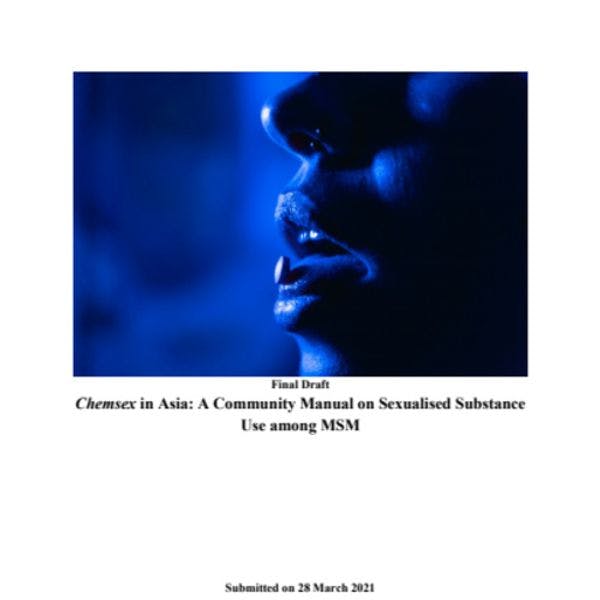Community Harm Reduction
Chemsex en Asia -- Un manual comunitario sobre consumo sexualizado de sustancias entre hombres que tienen sexo con hombres
Un manual de Community Harm Reduction sobre cómo las organizaciones pueden mejorar sus iniciativas de salud con hombres que tienen sexo con hombres, particularmente en países asiáticos. Más información, en inglés, está disponible abajo.
By The Global Fund
Achieving the global target to eliminate HIV transmission among men who have sex with men (MSM) faces additional challenges from the lack of effective and scaled intervention to address a part of the population who use drugs in sexual settings (colloquially known as chemsex). In this report, we intend to deliver a practical toolkit for community-based organisations (CBOs) who work to improve health outcomes for MSM, particularly in Asian countries. This manual provides the contextual information on chemsex practices among MSM in Asia and offers information and interventions to respond to the situation appropriately.
Chemsex is a term generally used to describe the psychoactive substance use by MSM at the sex event-level, which typically includes mephedrone, GHB/GBL, or crystal methamphetamine. In Asia, the definition of chemsex (local terms: high fun, chemfun) seems to be adjusted to reflect the local pattern that may involve different drugs such as poppers, ecstasy, 5-metoxy-n or foxy, cocaine, ketamine, cannabis, or non-prescription drugs. Overall, the prevalence of this practices among MSM in Asia ranges from 3.1% to 30.8%. Several reasons influencing the decision of MSM in Asia to practice chemsex include the direct benefit of using the drug, persuasion from peer network, and external prejudice directed towards MSM existence. For now, the practice is more likely to be done by MSM who live in urban areas, have higher educational degree and income, and engage in habitual online behaviours, can be categorized as money boy, and have been identified as HIV+.
The use of drugs in sexual context has a strong relation with sexual risk behaviours that contributes to the increased risk of HIV transmission among MSM. The risk behaviours include higher sex frequency, unprotected sex with multiple partners, group sex, inconsistent condom use, internal ejaculation, lower expectation of sex partners to use condom, less concern on sex partners HIV and Sexual transmitted infection (STI) status, and imbalanced power relations. Consequently, the chemsex practice increases the odds of contracting HIV and other sexually acquired infections. In addition, some evidence indicates that chemsex practice is associated with mental health issue, such as suicidal risk, depression, and anxiety. The interplay between social inequities, substance use, and other health conditions can mutually reinforce health disparities such as HIV.
